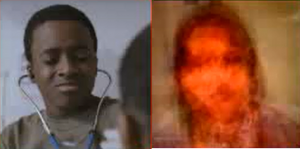On science blogs this week: Travel in Mind
DO THE LOCOMOTION. Moderate hubbub about two papers tracing paleo-human migration patterns. In general bloggers interpreted the data cautiously, except for paleoanthropologist John Hawks:
These data utterly destroy the hypothesis of a single out-of-Africa colonization of Southeast Asia by modern humans. Many human geneticists have argued our present pattern of diversity originated in a wave of successive founder effects coming from a single recent African origin. They were wrong. Instead, we can turn to a complex model with successive dispersals and episodes of population mixture. This is not a static model of isolation-by-distance; it is a dynamic model in which populations grow and spread across large spans of the Old World, again and again and again.
Australian data were gathered from a single sample of DNA that is not exactly ancient, but certainly elderly, since it came from hair a single Aborigine gave to a visiting anthropologist in the 1920s. It suggests that Aborigines have a complex genetic history that begins with modern humans who left Africa early enough to get to Australia by 50K years BP, along the way acquiring the Neandertal genes present today in all nonAfrican populations, but also genes from the mysterious Denisovians. Denisovian remains have so far been found only in Siberia, but the second new paper shows that their genes are deposited widely in island Southeast Asia and Australia. It also appears that Aborigine ancestors include folks who left Africa thousands of years after the first bunch and became East Asians (and eventually Americans) as well. This admixture is estimated to have occurred ~30K years BP. Hawks warns that even this rococo model is likely oversimplified.
A couple comments from Razib Khan at Gene Expression:
Out of Africa onward to Wallacea.
The Australian Aborigines may not be just descendants of first settlers.
Dienekes' Anthropology Blog muses on the significance of the Denisovian admixture.
Knight Science Journalism Tracker Charlie Petit links you with journalism on these papers. As to his question about how people got to Australia, given that there's no archaeological evidence of boats that old and it is accessible only over deep water: Well, how else? Absence of evidence is not evidence of absence blahblahblah. See my ancient piece on ancient mariners.
BIOETHICS OF ABORIGINAL GENETICS. The aboriginal hair also, I guess inevitably, provoked discussion of the ethics of doing genetics on indigenous peoples, even long-dead ones. Dienekes has plenty to say about that, too. See also Khan comments, which have a lovely hed: "All your genes belong to the tribal council!"
EVOLUTION, JUST FOR FUN. Bobbie-the-Jean at Deviantart: 50 Reasons I Reject Evolution. I guess my favorite is #11, which I have expurgated slightly for this family publication:
Because I think the word "theory" actually means: "random stabs in the dark" when it really means: "an explanation of certain phenomena that is well-supported by a large body of facts and often unifies similarly well-supported hypotheses" i.e. atomic theory, gravitational theory, germ theory, cell theory...
DEPARTMENT OF AMPLIFICATION. The folks at Nature Publishing would like you to know that the blog Spoonful of Medicine (which I quoted a while back on the subject of genetically engineered fluorescent cats) is a Nature Medicine blog, even though it isn't identified that way on the nature.com site. I have no idea why not.
THE SHAPE OF THINGS TO COME IN THE MIND'S EYE. You can call it, sedately, a digital version of the human visual system, as Technology Review did. Or you can call it mind-reading, as other outlets could not resist doing. Mind-reading, or very nearly, is what it looks like to me, too. Not to mention mind-blowing.
At Tech Review, Erica Westly explained it clearly enough:
Researchers at the University of California, Berkeley, have developed an algorithm that can be applied to functional magnetic resonance imaging (fMRI) imagery to show a moving image a person is seeing.
The decoder algorithm developed by these researchers can describe how temporal and spatial information are represented by fMRI data.....The results I’m showing below may look crude, but the fact that they’re just based on an algorithmic analysis of fMRI data is incredible.
Incredible, but certainly not in the sense of unbelievable, not possible, couldn't happen. It did happen. The researchers showed movies while scanning viewers' brains, capturing almost-recognizable pictures of what they were seeing. Unnerving example below. Several of the links I'm citing have videos too.
Blog posts gave quite decent plain language explanations of the intricacies of putting the algorithm together. At 80beats, Valerie Ross walked through the very complex steps involved in developing the algorithm. She also sought to damp down incipient hype, noting
Decoding what someone sees is different from decoding what they’re thinking. The researchers were just looking at low-level visual processing (what lines, textures, and movements people saw), not higher-level thought like what the clips reminded them of, whether they recognized the actors, or whether they wanted to see the movies they watched trailers for. Those are far more complicated questions to tease out, and can’t be tracked feature-by-feature as easily as visual processing.
At Thoughts on Thoughts, Janet Kwasniak also explained, for example how the color was achieved. At xcorr, a blog on computational neuroscience, Patrick J. Mineault went into mathematical detail explaining the algorithm. The researchers' lab has detailed explanations and an FAQ.
Ross noted that the work might eventually help with inability to communicate, as in locked-in syndrome. Try Nerdy speculated that eventually the approach might help police substitute actual pictures for eyewitness verbal descriptions of criminals. Others suggested that it might make dreams visible, able to be shared — YouTube? — with the world. The stated aim of the researchers, Westly said, is not so mind-boggling: "to create a computational version of the human brain that 'sees' the world as we do."
THE SKY IS FALLING, THE SKY IS FALLING. I was thinking about an item on NASA's potential misadventure with its falling satellite, but Naaaah, you've had enough of that elsewhere. Doing the research, though, I ran across this video via Greg Laden's blog. Not to be missed. Truly. Trust me on this.




